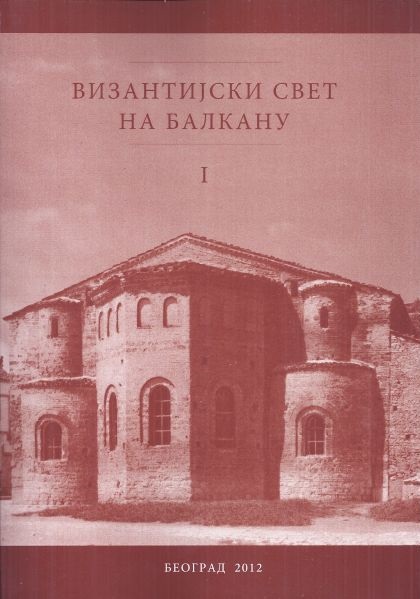Лична побожност на подручју Охридсе архиепископије у светлу археолошких налаза од XI до XIII века
Personal Religiosity In the Area of the Archbishopric of Ohrid in the Light of Archeological Evidence from the 11th to the 13th Century
Author(s): Perica Špehar
Subject(s): Cultural history, Social history, 6th to 12th Centuries, 13th to 14th Centuries
Published by: Vizantološki institut SANU
Summary/Abstract: Within the process of the reorganization of the Byzantine Empire, after the defeat of the Bulgarians in 1014, the Archbishopric of Ohrid, with 33 dioceses, was established in 1025. Christianizing missions on the Balkans, originating from Constantinople, which started in the second half of the 9th century, could be traced through the literary sources, changes in the funeral character and through the remains of church architecture. Also, after the archbishopric was founded, the massive use of items of personal religiosity began. Those items can be divided into encolpia, cross-pendants, small icons, medallions, ampoules and rings. So far, from the territory of the Archbishopric of Ohrid, more than 600 items of personal religiosity have been published. Since the original archbishopric covered the territories of several modern countries, these types of finds were not published. Although their number is not final, it can be said that this is a small amount of items of personal religiosity, used by the relatively numerous Christian population on the broad territory during the two centuries. The items of personal religiosity, which had an apothropaic use, represented also a sign of belonging to a new social group. According to the available data, the most numerous are finds of encolpia and cross-pendants, certain types of which are characteristic just for some parts of the Archbishopric of Ohrid, while the other groups of items of personal religiosity are much less represented. Most of the finds with a certain archaeological background were discovered in the rural cemeteries, where inhumation according to the Christian funeral ritual was practiced. In most of the cases those finds were sporadic, with the exclusion of the necropolis near the Church of St. Panteleimon in Niš, where a large amount of finds was found. The quantitative analysis of the items of personal religiosity indicates that, most probably, for the use of those finds, the level of the urbanization of a certain town and religious centre, such as Ohrid, Prilep, Niš, Braničevo and Durostorum, had great importance. The Archbishopric of Ohrid played a significant role in the process of the Christianization of the Balkans, since during the first two centuries of its existance the new religion was firmly established. The completely Christian funerary practice, the development of the church architecture and the use of the items of personal religiosity testify to this. However, relicts of pagan customs were also registered. Those were explained mainly as the consequence of the low level of the Christianization, although it could also be explained by the necessity of the people to reach out for all the available assistance of “higher forces” during hard times.
Book: Византијски свет на Балкану I-II
- Page Range: 205-220
- Page Count: 16
- Publication Year: 2012
- Language: Serbian
- Content File-PDF

